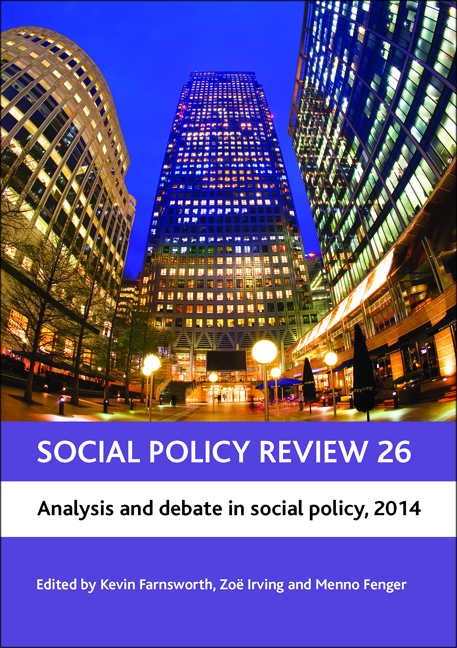Fourteen - The competition–collaboration dilemma: the perverse effects of mixed service integration policy approaches in Queensland
Published online by Cambridge University Press: 07 March 2022
Summary
Introduction
Integration, the combining of parts so that they work together, has long been advanced as a core strategy for the more efficient and effective delivery of social services in Australia, as exemplified by the numerous experimentations in form and location that have taken place since the late 1800s (Tierney, 1970). Integration continues to remain high on the Australian social policy agenda and is evident in a range of recent policy statements (for example, Australian Government, 2008; 2013; Australian Public Service Commission, 2009) as well as in prime ministerial speeches on improved social service integration (for example, Rudd, 2009). In the search for integration a number of approaches have been utilised, including structural initiatives such as central government agencies, mega-departments and lead agency models as well as procedural directives, including funding regimes and operational mandates. Vertical integration arrangements work by organising the various parts of a system under one umbrella organisation or body (Powell, 1990) and have been supplemented by horizontal forms such as whole-of-government approaches, partnerships, networks and collaborative arrangements that act as the ‘glue that binds’ people and resources together for collective action (Powell, 1990, p 325).
While the collaborative push (O’Flynn, 2009) currently shapes much of the public rhetoric for social services integration, several other approaches are also in play. Some of these can be traced back to new public management and its use of competition policy to establish more efficient and economical connections between sectoral elements (Earles and Moon, 2000) and to support growing demands by government and other funding providers for higher levels of accountability for outcomes (Australian Productivity Commission, 2010). In a recent twist to the integration and accountability reform agenda, amalgamation and merger have reappeared as key mechanisms to link up ‘like’ departments and smaller not-for-profit organisations to achieve a greater level of consistency in service provision (Deloitte, 2009). Amalgamation is the combination of two or more organisations or units into a new agency or a subsidiary controlled by one of the constituent members (Craswell and Davis, 1993). The benefit of such an approach is reduction of duplication and overlaps, for example through shared administration, co-location and closer alignment of outcomes or merger (Deloitte, 2009). In this way, efficient scale and scope can be achieved and resources can be more effectively targeted toward persistent problems.
- Type
- Chapter
- Information
- Social Policy Review 26Analysis and debate in social policy, 2014, pp. 259 - 278Publisher: Bristol University PressPrint publication year: 2014



